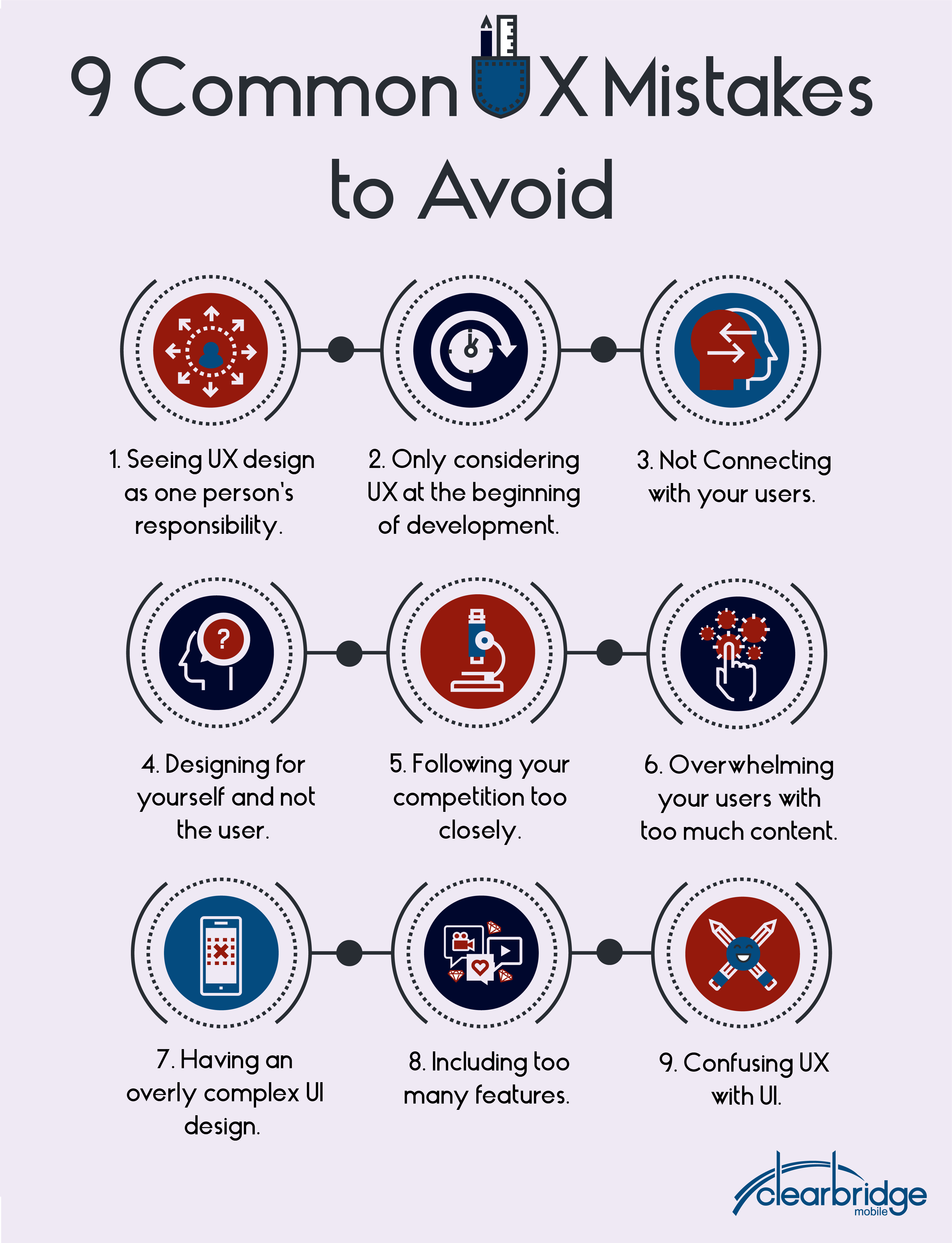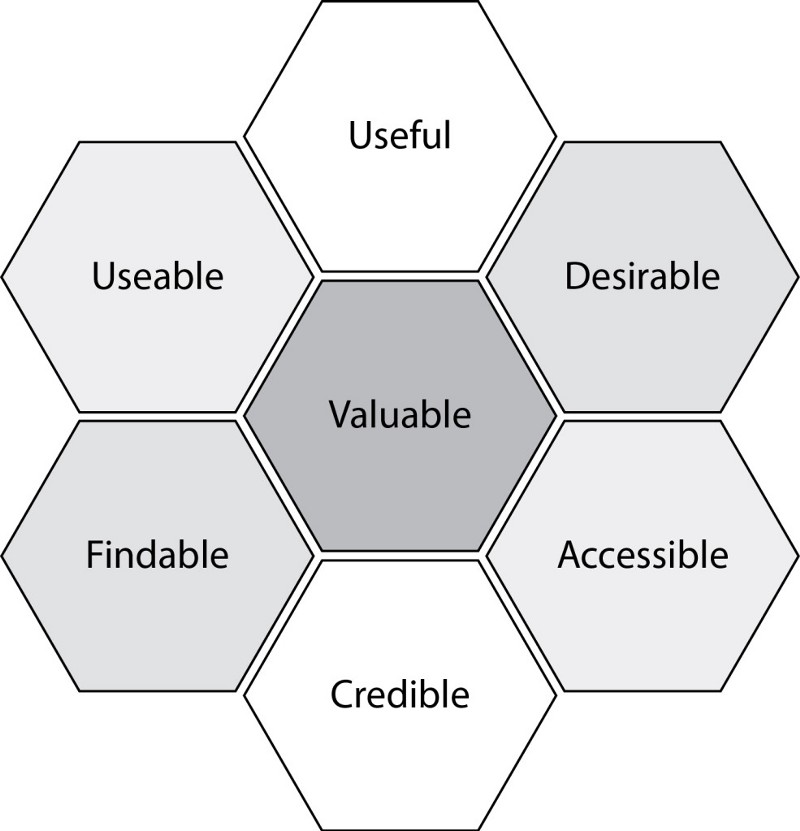The success of your mobile app rests on multiple different factors; however, the most important factor is easily user experience (UX) design. Expectations for mobile interactions have grown, and as a result, UX design has become an essential part of the mobile app development process.
What is User Experience?
At a high level, UX involves everything that affects a user’s interaction and perception of a product. In mobile app development, UX is the practical, experimental, meaningful, affective, and valuable characteristics of human-machine interaction and product ownership. The diagram below is a helpful resource for explaining the components of a compelling UX design.
- Useable: A mobile app needs to be effortless to use. It needs to be designed in such a way that is straightforward and intuitive to the user.
- Useful: No matter what, an app needs to fulfill a user need. If the product doesn’t fill a gap in the user’s life, they will not use it.
- Desirable: The user interface (UI) design of a mobile app needs to be aesthetically pleasing. Visual design components play a major role in positive emotional attribution.
- Findable: If a user finds a deficiency in the software, a solution should be immediately apparent.
- Accessible: App design needs to accommodate every user.
- Credible: The company behind the mobile app has to be reliable.
The combination of these six components is what creates value for the user. The priority of any mobile app is to deliver a UX which maximizes user value.
UX Design is About People
UX designers are expected to take in every detail of the interactions a user has with a mobile app. Without a thorough understanding of user behavior, the product will not be able to satisfy user needs and expectations. Successful UX design insists on a complete understanding of user behavior, motivations, goals, wants and needs in the context of the product’s purpose. UX design is dynamic, and the UX requirements for a mobile app will evolve, especially as new technology develops and you receive user feedback.
This post will blow the whistle on nine common UX mistakes to avoid to enhance mobile app design and delight users.

Mistake #1: UX Design is One Person’s Responsibility
User experience goes beyond an individual designer, or a design department, for that matter. The whole product team should be involved in the mobile app design. This is a collaborative process, and the product team needs to share a common goal and vision for the UX that they can deliver collectively.
Involving the entire team allows you to leverage multiple areas of expertise and experience to inform every product decision. It’s important to ideate with developers, architects, product owners, and business analysts during the mobile app product discovery and definition stage of a project. Increased collaboration creates a holistic approach to development from the very beginning of the project.
Mistake #2: Only Considering UX Design at the Beginning of Development
Again, UX design is dynamic. To offer the best possible experience, listening to user feedback is crucial. You need a solid understanding of what they like and dislike about your product, and continue to iterate with each version release of your app.
An accepted way of validating your product is to test it with your target audience. Developing a minimum viable product (MVP) will help you determine if your product idea is well-received by its core users. The most successful apps on the market all started as something simple and grew when user behavior research became available.
Mistake #3: Failing to Connect with Users
A great UX leaves a lasting impression. Valuable products have individual significance and resonate with user values on a personal level. You can take a product to market that is visually appealing and usable but still doesn’t hit home with your users. Ask yourself, how are you connecting with your users? Are you helping them achieve a goal? Are you connecting them to a community? The impression you leave with your users will make the difference between a mobile app they keep and one they delete.
Mistake #4: Not Practicing User Empathy
Development teams, and particularly designers, often form strong opinions about the product they’re building. A good UX designer is able to step outside their role as a designer and put themselves in the shoes of the user. As they design, they need to be able to picture how the product will resonate with the target audience. A user-centric design approach is critical throughout the entire development lifecycle so the app evolves to fit the needs of users, and not the people who are building it.
Mistake #5: Following Your Competition Too Closely
What works for one mobile app may not work for the next. Don’t try to imitate your competition, learn from them and combine your research with your brand’s own innovation to establish your competitive edge. There are millions of apps available for users and you need to provide something unique, innovative, and valuable to stand apart from the rest.
There is no mobile app cheat sheet, (but there is this checklist). Certainly, your competition will provide inspiration to draw from, but trends that work for some companies may end up dating your product later. Instead, analyze why these trends are working, then apply this research to suit your business and user needs; you can customize, iterate, and learn from this foundation. As with all mobile app products, research will make for a stronger UX in the long run, when you tailor it to your audience and platform.
Mistake #6: Overwhelming Your Users With Too Much Content
Don’t cram all of your content onto the first screen of your app. Use content strategically to guide users through your app, providing value along the way. You can’t overload users with information because you will frustrate them. Users like the interactivity of mobile app design because they enjoy the satisfaction of self-initiated discovery.
In contrast, you can’t omit important information. Remember to be concise and intuitive but not sparse. Draw users in with a question, a bold statement, interactive element, or anything that invites the user to participate and engage. Good content is a significant aspect of UX design, so it’s important to develop an effective content strategy.
Mistake #7: Having an Overly Complex UI Design
Good UX doesn’t always have an intricate design. If there are too many distractions, a mobile app UI can take away from the end experience. Instead of including design elements that serve no purpose, simplify with meaning.
That doesn’t mean you have to do away with large-scale animation. In games, animation certainly has a place, but in an everyday utility app, animation needs a purpose. Some examples of animation are loading indicators, pull to refresh, and function change.
Mistake #8: Including too Many Features
Instead of including too many elements and features, recognize your brand’s strengths. When you look at a restaurant menu that features every type of cuisine, it can overwhelm you. While it may seem beneficial to cater to everyone’s needs, it’s disjointed and calls to question the restaurant’s ability to specialize in what they’re good at.
This example is also relevant to brand identity. If your app includes everything for multiple demographics, you won’t please anyone. Instead of building a loyal user base, you’ll end up frustrating them. Not only is this bad for user retention, but for your brand identity as well. Find your unique value proposition that will give you the competitive edge you need.
Mistake #9: Confusing UI with UX
It’s nearly impossible to extricate the UI from the UX and vice versa. You can’t work on one design concept without considering the other. Good UX design is so subtle and natural that it seems obvious and effortless for the user. The amount of analysis involved is invisible to the end user. It is the foundation or the structure of the app. UI design, on the other hand, consists of compelling and aesthetically pleasing interfaces with which the user interacts with. It is the exterior. Knowing when and how to utilize both of these design disciplines will be crucial to the success of your app.
Final Word
These nine mistakes can derail projects from maximizing their impact on business outcomes. Further, understanding how to overcome common UX mistakes will encourage flexibility and break through perceived limitations. When you eliminate the barriers, these common UX mistakes impose, the result is a better end product that delights your users.
UX design is a bottom-line investment. It’s more important than ever for brands to ensure customers, users, and clients have positive experiences and interactions with digital content.





User experience is an integral part of a product life cycle that defines the extent to which a product is going to succeed. The features of a product, esthetic design, placement of buttons and all contribute to user experience for mobile and web applications. The initial designs of products are built in accordance with global standards and design conventions which presumes the hypothesis that it is the perfect design for this product. Usually, companies either keep the same design or do hit and trial to enhance the user experience. This article intends to navigate you on the product’s journey of “How to improve the user experience for mobile and web applications.
This was a very informative blog and I really enjoyed reading it. But I also have a few points regarding it to discuss with you.
By implementing the latest user interface design principles, you can create a better user experience for your customers. This will boost customer satisfaction and increase retention rates. Here are some ways to improve your mobile app’s UX.
1. Clear CTA
2. Simple Login Screen
3. Make user-predictable interactions
To read more about it, please visit: https://blog.alakmalak.com/how-to-evolve-your-apps-user-experience/?UTM-andrew-july/